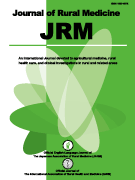Objective: The initial and operational costs of telemedicine are major barriers to its adoption. We aimed to investigate and identify the barriers to adopting a telemedicine system in a Japanese rural general hospital without incurring setup and operational costs.
Materials and Methods: Our study was conducted between May and August 2018, and included six general practitioners working at a rural general hospital. We extracted data collected from messages (date and time, sender and recipient, and counts and contents of messages) and conducted semi-structured interviews, which were then analyzed using quantitative and qualitative methods.
Results: We quantitatively analyzed the total counted of the 179 messages. The total counts recorded for each physician were 56 (A), 20 (B), 3 (C), 74 (D), 5 (E), and 21 (F). The mean monthly counts were 2.17 (May), 8.50 (June), 11.50 (July), and 7.67 (August). Interview data from the six physicians yielded 13 codes that included various points of dissatisfaction acting as barriers to using our system, which we grouped into mental and physical barriers. Mental barriers included suspicion of carrying, feelings of isolation, and loss, whereas physical barriers included portability, user authentication, internet speed, group chat system, notice, search image, typing, chat system, print facility, and limited function.
Conclusion: The representative barriers to introducing a telemedicine system at a rural general hospital in Japan without initial and running costs could be classified as feelings of isolation and suspicion of carrying (mental barriers); and notice, portability, and user authentication (physical barriers). Continued investigation in this area is warranted, and solutions to these barriers could improve the shortage of medical staff in the context of declining birth rates and aging populations in Japan.
View full abstract
